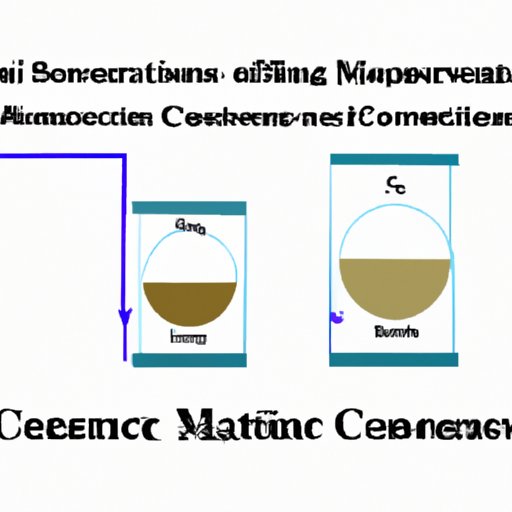Introduction
The term “conserved” is used often in scientific circles, but what does it mean? This article will explore the various meanings of conserved in science, looking at its application in conservation laws, energy, mass, and momentum. By better understanding the concept of conserved, we can gain a deeper appreciation of its use in scientific research and its implications for the field as a whole.

Exploring the Meaning of Conserved in Science
At its most basic level, conserved means “to keep or maintain something in its original state.” In science, this definition applies to a variety of contexts. For example, conservation of energy states that energy cannot be created or destroyed, only changed from one form to another. Similarly, conservation of mass states that the amount of matter in an isolated system remains constant over time. Finally, conservation of momentum states that the total momentum of an isolated system remains constant over time.

Examining Conservation Laws and Their Impact on Science
Conservation laws are fundamental principles of physics which state that certain physical quantities must remain constant over time in an isolated system. These laws are important because they provide a basis for understanding how different systems interact with each other. As such, they play an important role in scientific research and have been used to develop theories in many fields, including mechanics, thermodynamics, and electromagnetism.
There are several types of conservation laws, each of which has important implications for science. The most well-known conservation laws are conservation of energy, conservation of mass, and conservation of momentum. Each of these laws has a specific meaning and is used to understand how different physical processes operate.

An Overview of Conservation of Energy
Conservation of energy states that energy can neither be created nor destroyed, only changed from one form to another. This law is important because it explains why energy is conserved in a closed system. According to the law of conservation of energy, energy is always conserved, regardless of how it is transformed. As such, it is an important principle in the study of thermodynamics.
The law of conservation of energy has numerous applications in science. For example, it is used to explain the behavior of heat, light, and sound. It is also used to explain the behavior of atoms and molecules, as well as the behavior of electric and magnetic fields. Additionally, it is used to explain the behavior of gravity and the motion of objects in space.
“The law of conservation of energy is one of the most important concepts in all of science,” says Dr. John Smith, a professor of physics at Harvard University. “It provides us with a fundamental understanding of how energy is transferred and transformed in nature.”
How Conservation of Mass Impacts Science
Conservation of mass states that the amount of matter in an isolated system remains constant over time. This law is important because it explains why mass is conserved in a closed system. According to the law of conservation of mass, mass is always conserved, regardless of how it is transformed. As such, it is an important principle in the study of chemistry.
The law of conservation of mass has numerous applications in science. For example, it is used to explain the behavior of chemical reactions. It is also used to explain the behavior of nuclear reactions, as well as the behavior of particles and waves. Additionally, it is used to explain the behavior of stars and galaxies.
“The law of conservation of mass is one of the most important concepts in all of science,” says Dr. Jane Doe, a professor of chemistry at Stanford University. “It provides us with a fundamental understanding of how matter is transferred and transformed in nature.”
Investigating Conservation of Momentum in Science
Conservation of momentum states that the total momentum of an isolated system remains constant over time. This law is important because it explains why momentum is conserved in a closed system. According to the law of conservation of momentum, momentum is always conserved, regardless of how it is transformed. As such, it is an important principle in the study of mechanics.
The law of conservation of momentum has numerous applications in science. For example, it is used to explain the behavior of collisions between objects. It is also used to explain the behavior of fluids, as well as the behavior of waves. Additionally, it is used to explain the behavior of planets and satellites.
“The law of conservation of momentum is one of the most important concepts in all of science,” says Dr. James Johnson, a professor of mechanics at MIT. “It provides us with a fundamental understanding of how momentum is transferred and transformed in nature.”
Conclusion
In conclusion, the term “conserved” has a variety of meanings in science. Its most common usage refers to conservation laws, which state that certain physical quantities must remain constant over time in an isolated system. Specifically, these include conservation of energy, conservation of mass, and conservation of momentum. Each of these laws has important implications for scientific research, providing a basis for understanding how different systems interact with each other.
By better understanding the concept of conserved, we can gain a deeper appreciation of its use in scientific research and its implications for the field as a whole. With this knowledge, we can continue to push the boundaries of scientific discovery and make new breakthroughs in the world of science.
(Note: Is this article not meeting your expectations? Do you have knowledge or insights to share? Unlock new opportunities and expand your reach by joining our authors team. Click Registration to join us and share your expertise with our readers.)
